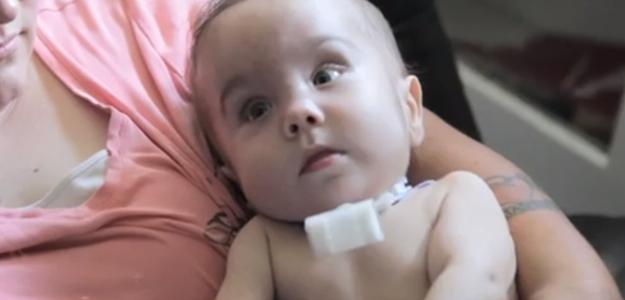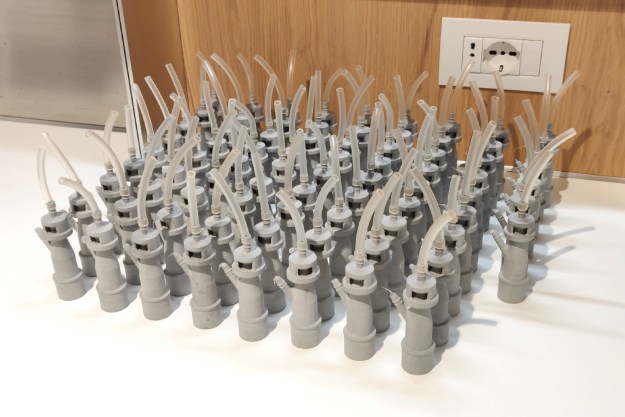
Wait, wait, we know what you’re thinking. You’re so over 3D printing. Guns, pizzas, iPhone cases, we’ve seen it all and the stories proclaiming the greatness of this Next Big Thing make the trend grow old quick. But we promise this hype’s worth the read: Without a 3D printer, a baby not even six months old would have died.
Kaiba Gionfriddo, who was born with a life-threatening respiratory disorder called trachebronchomalacia, is the infant saved by such technology. Every day, there was a period where Kaiba stopped breathing as his collapsed bronchus blocked the flow of air to his lungs, and doctors involved with the family were not optimistic about his future. “Quite a few doctors said he had a good chance of not leaving the hospital alive,” said Kaiba’s mother, April. “At that point, we were desperate. Anything that would work, we would take it and run with it.”
It turned out that what could work ended up being research being carried out at the University of Michigan into bioresorbable devices. After being contacted by Kaiba’s doctors, UofM’s associate professor of pediatric otolaryngology Glenn Green and professor of biomedical engineering and mechanical engineering (and associate professor of surgery) Scott Hollister became involved in the case.
“We reasoned that the localized tracheobronchomalacia was the cause of this physiological abnormality,” the doctors write in the paper supporting their actions, “and made a custom-designed and custom-fabricated resorbable airway splint. Our bellowed topology design, similar to the hose of a vacuum cleaner, provides resistance against collapse while simultaneously allowing flexion, extension, and expansion with growth.”
The design was created using a CT scan of Kaiba’s trachea, with the computer model then used to create a 3D printed splint. The device is made from a material called polycaprolactone, which will break down and be absorbed by Kaiba’s body after three years – at which point, doctors believe, the body will have managed to grow an unrestricted airway by itself thanks to the support offered by the splint.
Of course, the design and construction of the device were hardly the only problems involved in this case. Before the splint could be installed, the team at the University of Michigan had to apply for (and were, obviously, granted) emergency clearance from the U.S. Food and Drug Administration because the process was so unusual.
More than a year later – the surgery to put the splint took place in February 2012 – and signs are that everything is proceeding as planned. Three weeks after the surgery, Kaiba was taken off the ventilator, and has had no problem breathing ever since. Suddenly, the days of silly 3D-printed burritos seems so far behind.
Editors' Recommendations
- 3DMakerpro’s Seal is a pocket-sized scanner to make next-gen precision 3D prints
- Need a last-minute Halloween costume? Check out these 3D-printable getups
- The future of making stuff: Inside the evolution of 3D printing with Formlabs
- Father’s Day Gift Idea: These cheap 3D printers are on sale for less than $300
- 3D printing lets hospitals make ventilator substitutes with common equipment


